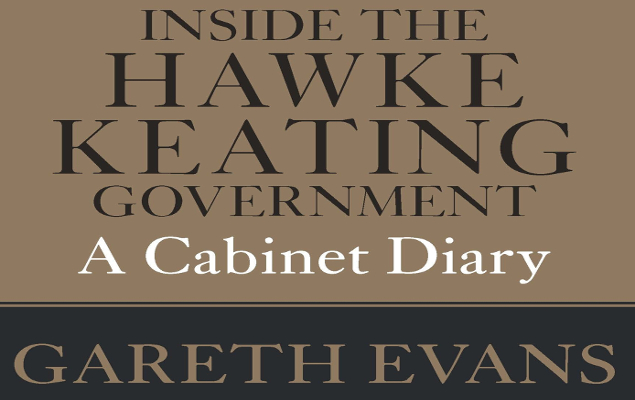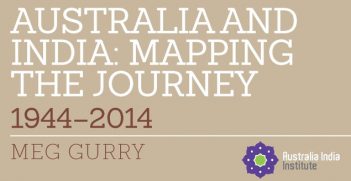Inside the Hawke Keating Government: A Cabinet Diary

For those of us who laboured in the Canberra Press Gallery during the heady 80’s and attempted interviews with Gareth Evans on occasions, this book will resonate strongly. It’s Gareth Evans in his best acerbic style – genuinely funny, a little bitchy, visionary in his long-term goals and downright testy with those fools he was forced to suffer!
The book comprises Evans’s diaries during the two years between late 1984 and 1986, when, ‘this was a time when a highly competent government was pretty much top of its game’. It begins on the day that he lost pre-selection for a new House of Representatives seat and covers his initial role as Attorney-General and then (a demotion) as Minister for Resources and Energy. It would have been wonderful if he’d continued his diary through his years as Minister for Transport and Communications and Foreign Minister but he says exhaustion took over and ‘the entries simply petered out.
What we’re left with are tales of angst, as in the infamous Lionel Murphy affair, intrigue (will he or won’t he be made Deputy Leader of the Senate?), obstacles of the hitting-head-against-brick-wall variety and a genuine passion for reform, especially over the demise of the Australian Constitutional Convention and the Bill of Rights.
Internationally, he became involved, often through Cabinet but also as Acting Foreign Minister, in the fallout from the MX missile test and the New Zealand nuclear ships affair, which required delicate diplomatic pussy-footing between our NZ cousins and the US.
Domestically, this period saw the tax summit and Paul Keating’s failure to introduce a form of GST and his famous ‘banana republic’ comments, which were designed to shock us into economic reality. It worked.
But the diaries reveal the great truth about political life – tedium. Evans seems to spend an enormous amount of time waiting for the ERC (Expenditure Review Committee), being briefed for the ERC, going back to the ERC. Then there are party meetings, which probably explained his almost constant testy approach to us as members of the Fourth Estate. And the travel was – and is – relentless. As Minister for Energy and Resources, he spent many hours in aircraft, down mines and looking knowledgeably at lots of pipes.
True students of history – and those of us who lived through those years – will be most fascinated by the Type A personalities who ran the government with Evans and the tensions which formed a permanent undercurrent. The love affair between Hawke and Keating (if it ever existed) started to fade to a tetchy middle-aged marriage before inevitable divorce, long before the media or the public were aware of it. Hawke does not come out well in this narrative – full of bonhomie one day, cranky as a sackful of cats the next. Accounts of Paul Keating’s obvious disaffection, through comments to his colleagues, indicate his frustrations and an acceptance that the comments may well be leaked. It’s surprising that it took so long.
There was tension, too, between Bill Hayden as Foreign Minister and Evans as an Acting Foreign Minister who wanted to get into a lot more overseas action. Friends one day, foes the next, Bill Hayden eventually went to Government House and Evans became one of our best and busiest Foreign Ministers between 1988 and 1996. Those diaries would have been worth reading but hopefully, that stellar period will be the subject of another book.
Gareth Evans, Inside the Hawke–Keating Government: A Cabinet Diary, Melbourne University Publishing, 2014
Niree Creed is the Director of Communications, AIIA. She covered Federal politics from the Canberra Press Gallery for the ABC in the 70’s, 80’s and 90’s.





